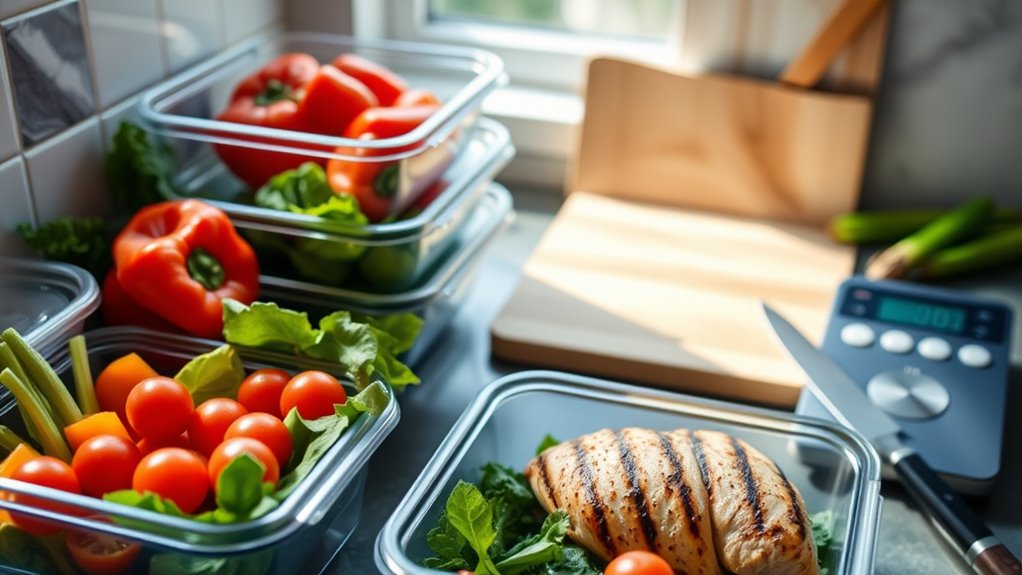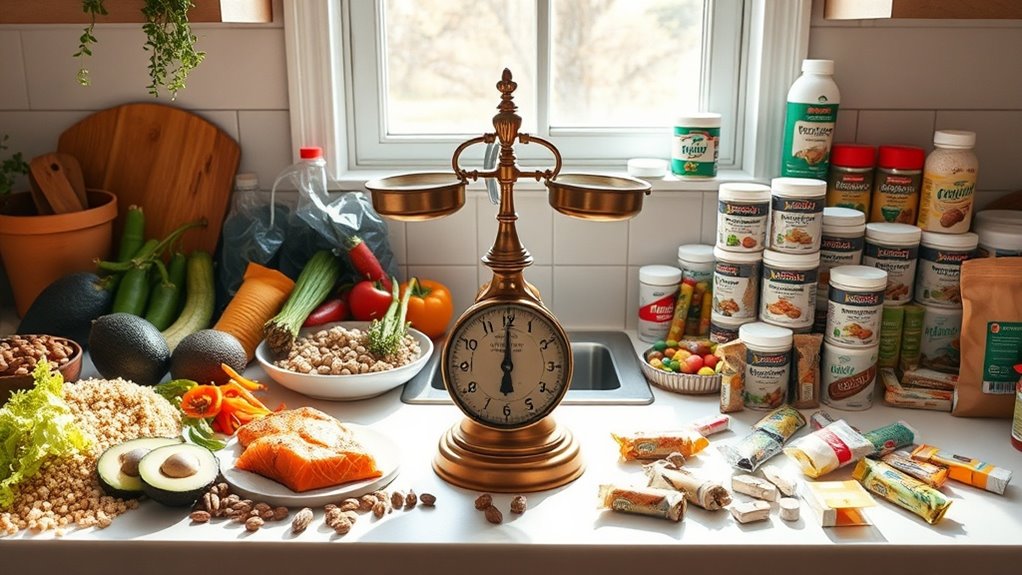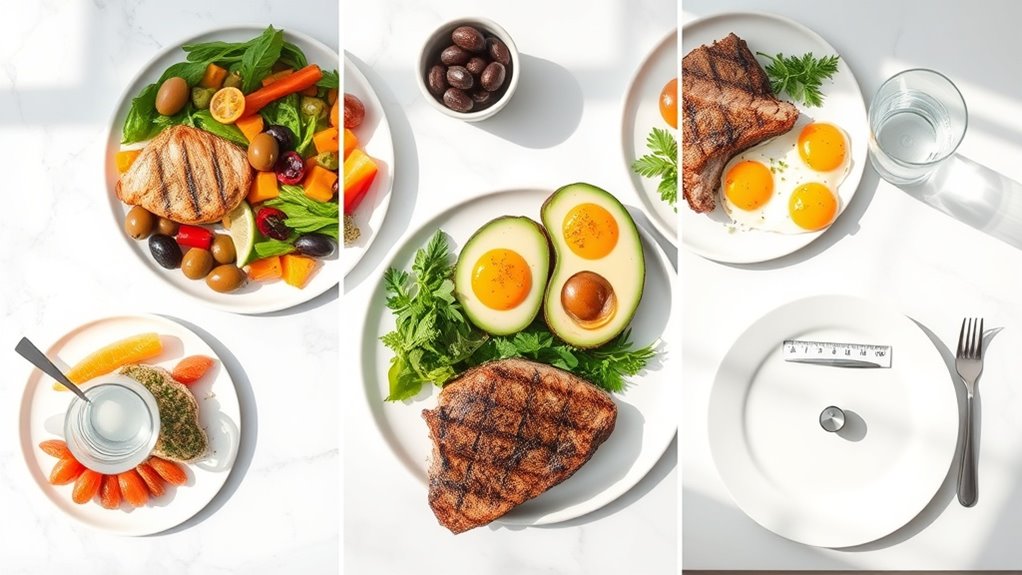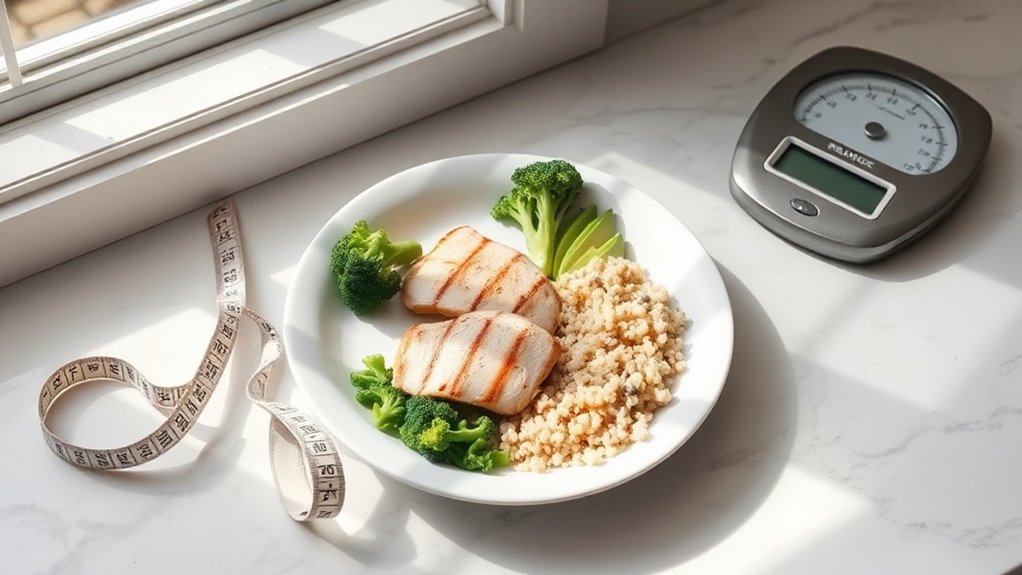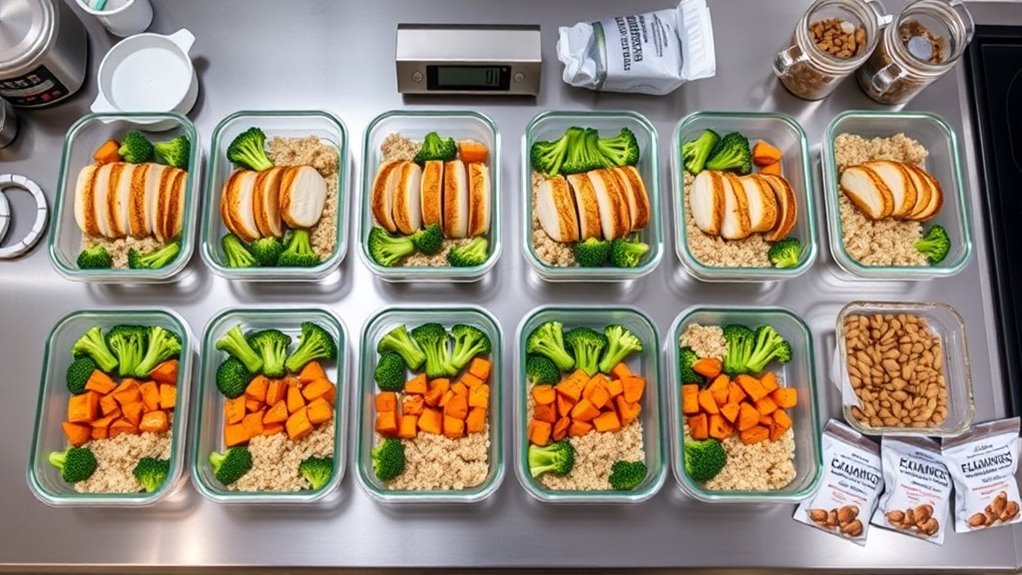Meal Prepping for Weight Loss-The Beginner’s Guide!
If you’re looking to lose weight, meal prepping can be a game changer. It helps you take control of your diet by making healthy eating easier and more convenient. With the right tools and a solid plan, you can set yourself up for success. But where do you start? Let’s explore the essential steps that will guide you in creating a meal prep routine tailored to your weight loss goals.
Understanding Meal Prepping and Its Benefits for Weight Loss
Meal prepping can be a game-changer for your weight loss journey, especially if you struggle with time management during the week. By planning your meals ahead, you’re setting yourself up for success and creating a sense of community with others who share similar goals.
Start by dedicating a few hours on the weekend to whip up some healthy, portion-controlled meals. Here are a few meal prepping tips: choose recipes you love, incorporate a variety of ingredients, and focus on balanced nutrition. It’s also helpful to utilize clear containers for easy storage and grab-and-go convenience. Remember, you don’t have to do this alone; you can swap recipes with friends or join online groups for support.
Incorporating small dietary tweaks can enhance the effectiveness of your meal prep efforts. When you make meal prepping a part of your routine, you’ll find it easier to stay on track, save time, and feel a sense of accomplishment in your health journey.
Essential Tools and Equipment for Meal Prepping
Here are some must-have items that can help you get started:
-
Quality containers: Invest in a set of durable, BPA-free containers to keep your meals fresh and organized.
-
Sharp knives: A good knife makes chopping veggies a breeze, saving you time and effort.
-
Cutting board: A sturdy cutting board provides a safe and clean surface for all your prepping needs.
-
Measuring cups and spoons: These help you portion ingredients accurately, making it easier to stick to your goals.
With these tools by your side, you’ll not only streamline your process, but you’ll also create a welcoming space in your kitchen that makes meal prepping feel like a rewarding ritual. Additionally, using meal planning apps can simplify creating healthy recipes and enhance your meal prep experience.
Creating a Meal Plan That Supports Your Weight Loss Goals
When you craft a meal plan tailored to your weight loss goals, you’re setting yourself up for success in your journey. Start by identifying your daily calorie needs and determine how many meals you’ll eat each day. Break your meals down into balanced portions that include protein, healthy fats, and fiber-rich carbs. This balance helps keep you satisfied and energized.
Next, consider your schedule and choose days when you can dedicate time to meal prep. Planning for busy days ensures you won’t resort to unhealthy options.
Keep your meals varied to avoid boredom—experiment with different recipes and cooking methods that excite you.
Don’t forget to listen to your body’s hunger cues. Adjust your portions as needed, and remember, it’s okay to indulge occasionally. Incorporating whole foods into your meal prep can provide better fuel for your body.
You’re part of a community striving for similar goals, so share your progress and challenges. You’re not alone in this journey!
Choosing the Right Foods for Healthy Meal Prep
Here are some foods that can help you on this journey:
-
Lean proteins like chicken, turkey, or tofu for muscle repair and satiety.
-
Colorful veggies such as spinach, bell peppers, and broccoli to provide essential vitamins and minerals.
-
Whole grains like quinoa, brown rice, or farro for sustained energy and fullness.
-
Healthy fats such as avocado, nuts, or olive oil to keep your meals satisfying.
Incorporating high-fiber snacks before meals can also promote longer-lasting satisfaction and help control cravings.
Portion Control: How to Measure and Serve Correctly
Mastering portion control is crucial for effective meal prepping and weight loss. You’ll want to measure your food accurately to avoid overeating. Start by using measuring cups or a food scale—these tools help you serve the right amounts.
For example, a standard serving of protein is usually about three ounces, while grains should be around half a cup.
Don’t forget about vegetables! Aim for at least one cup per serving. Pre-pack your meals in clear containers; this way, you can see exactly what you’re eating.
When it comes to snacks, portion them out into small bags or containers to resist the temptation of mindless munching. Additionally, practicing portion control by using smaller dishes can help make your meals appear more satisfying and reduce the likelihood of overeating.
Time-Saving Techniques for Efficient Meal Prep
To make meal prepping more efficient, you can incorporate a few time-saving techniques that streamline the process.
These tips not only save you time but also help create a sense of community as you share your meals with friends or family.
-
Plan your meals: Set aside time each week to decide what you want to eat. This gives you direction and reduces last-minute stress.
-
Batch cook: Prepare larger portions of your favorite meals and freeze them. This way, you always have a healthy option ready to go.
-
Use versatile ingredients: Choose items that can be used in multiple dishes, allowing for variety without needing too much prep time.
-
Prep in bulk: Chop veggies, cook grains, or marinate proteins all at once. It sets you up for quick assembly later on.
-
Staying hydrated is also important as increased water intake can help curb hunger and reduce cravings.

